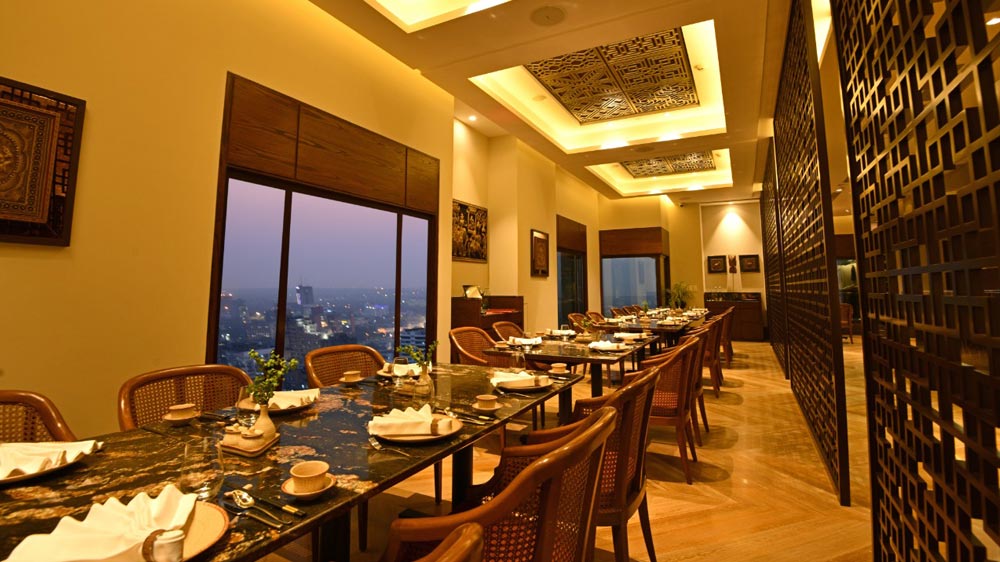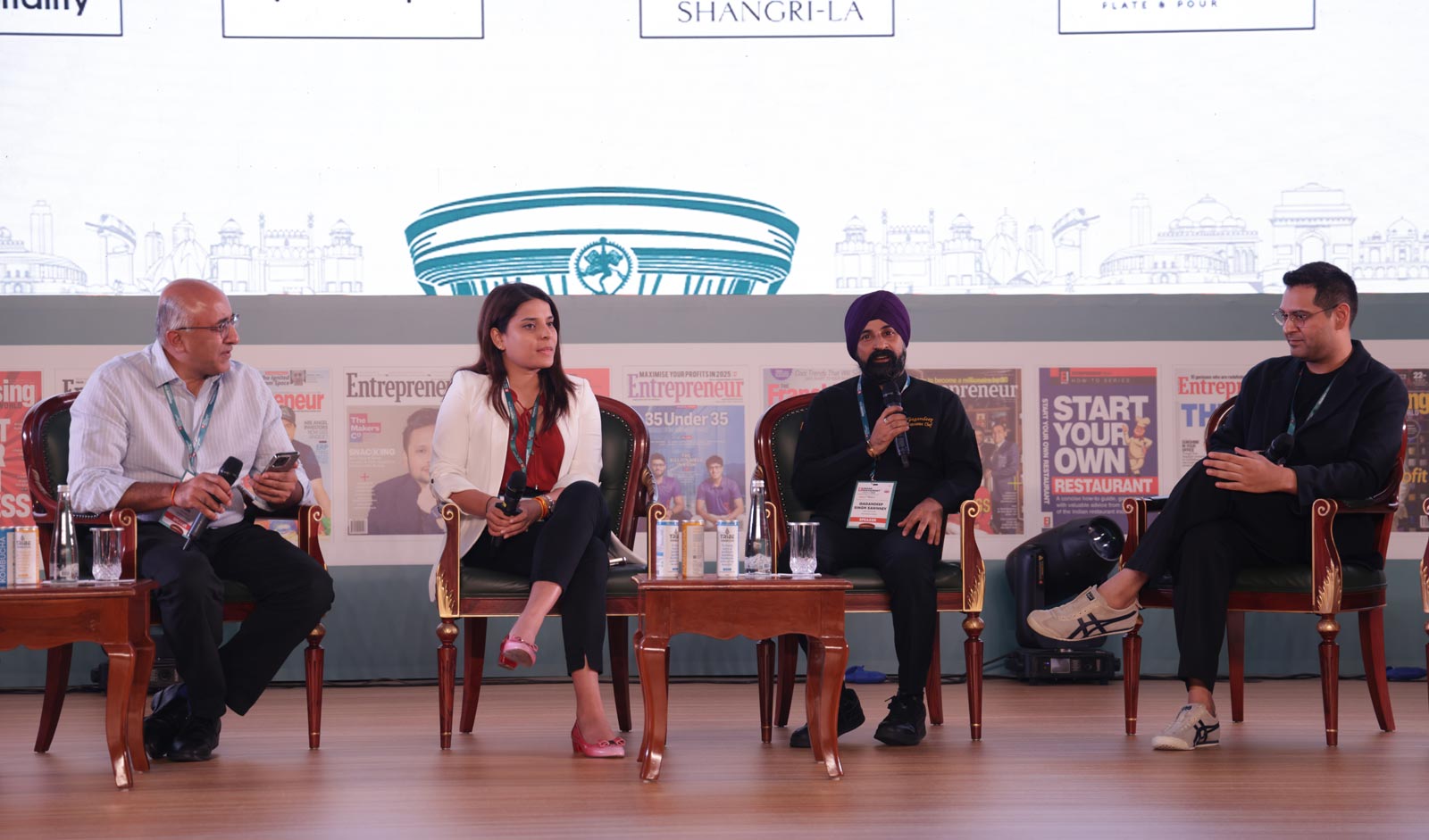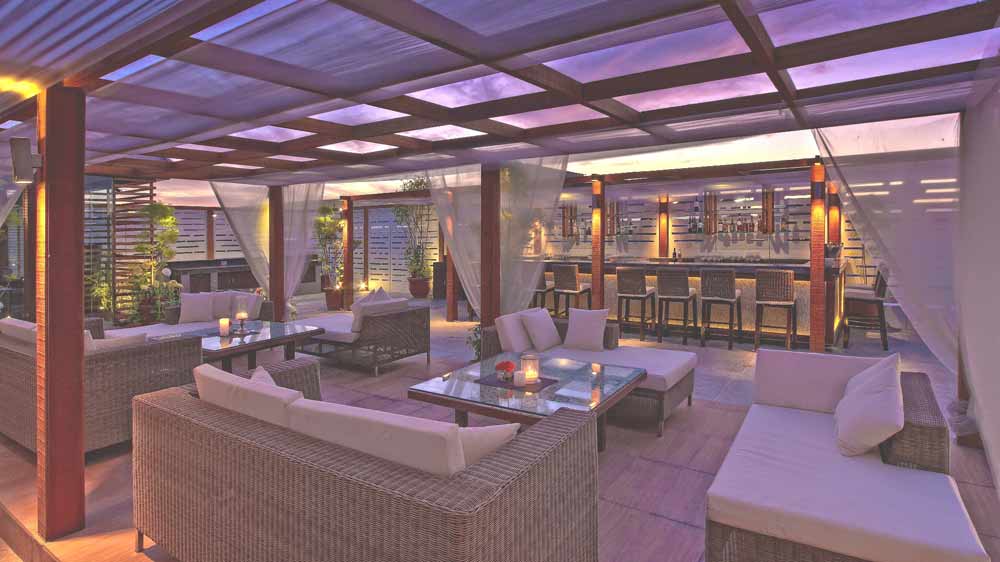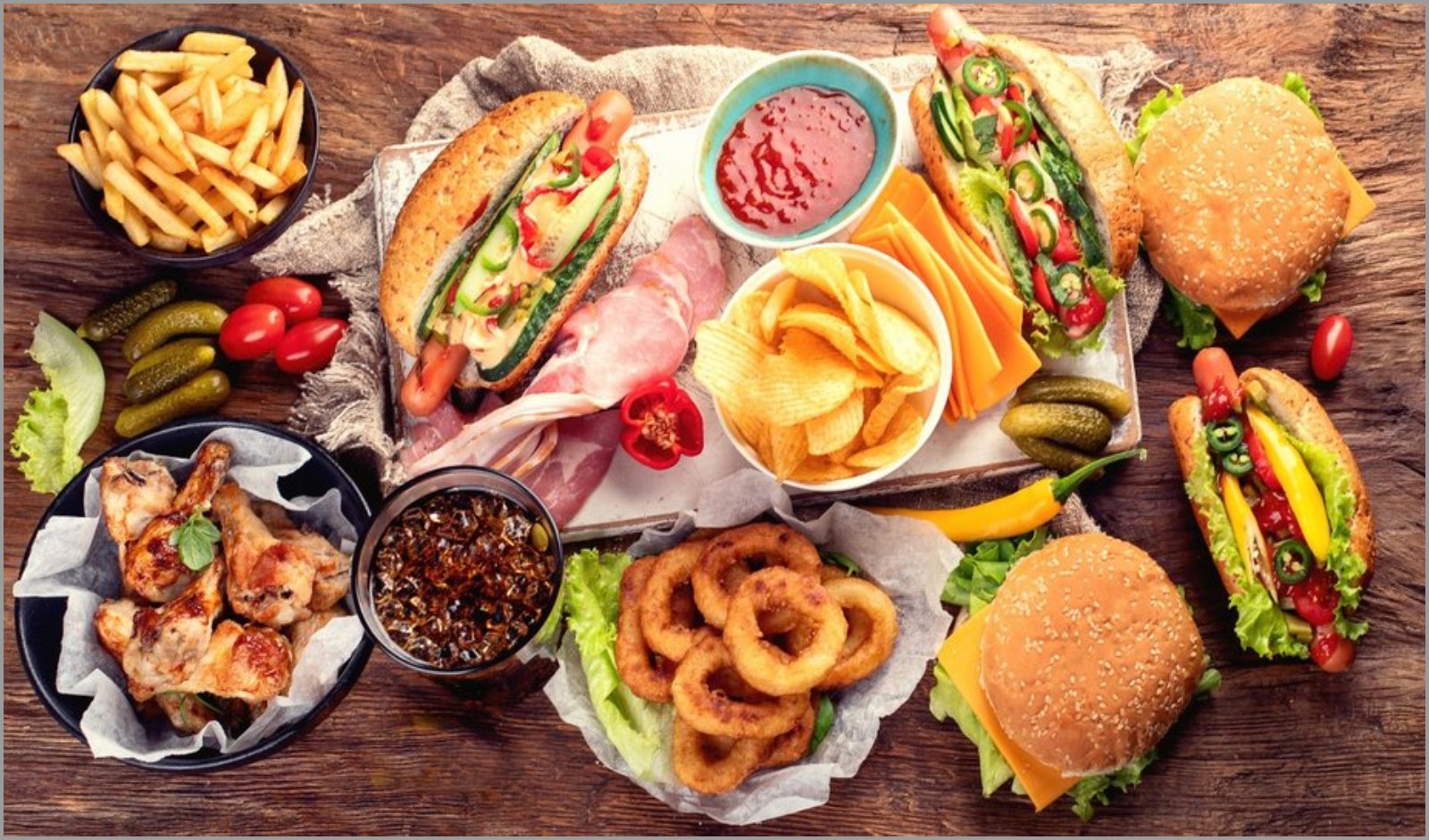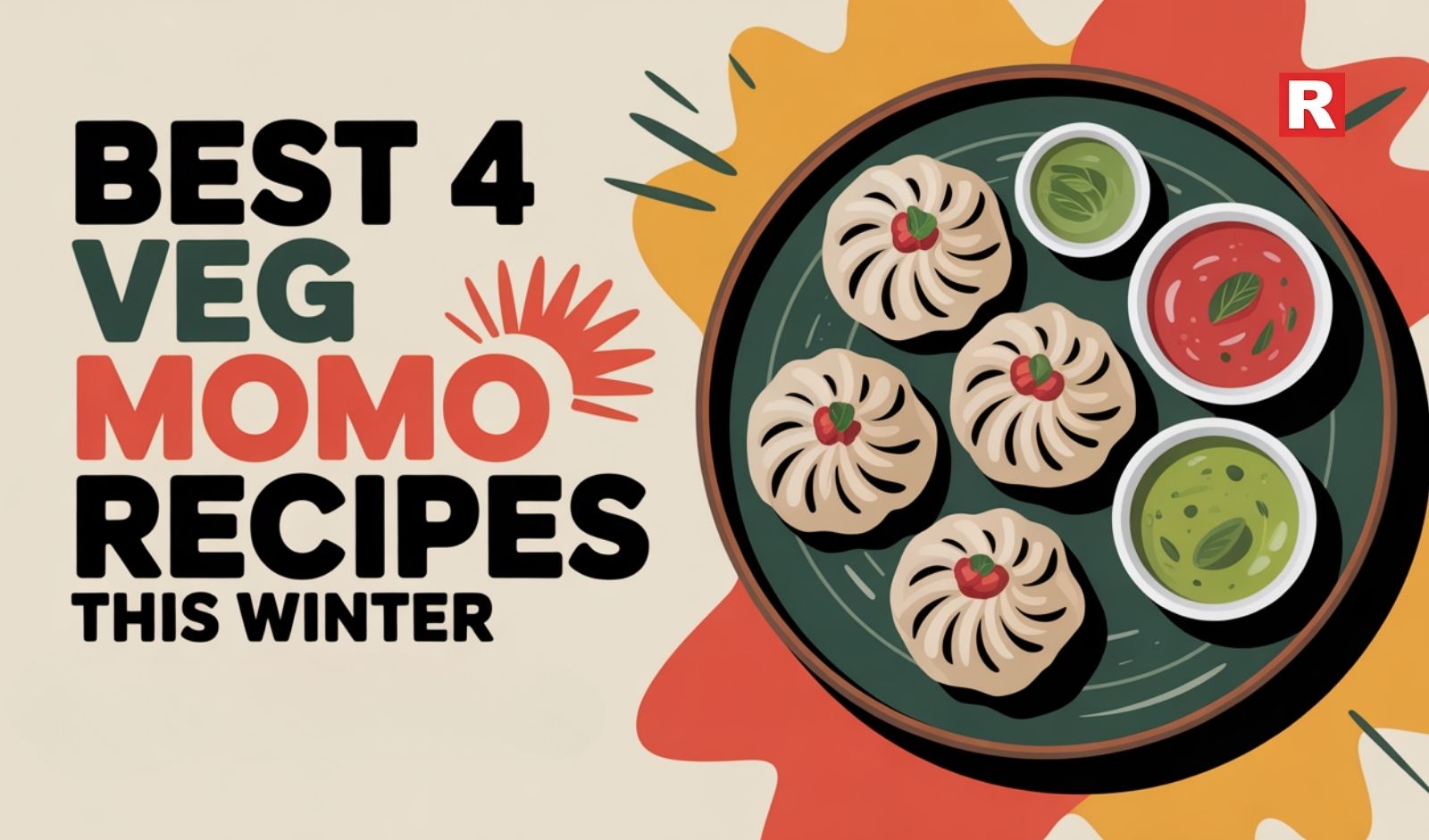
On the 28th floor, overlooking the spectacular skyline of the capital city, we were at The Lalit’s pan-Asian restaurant called OKO. The restaurant was dimly lit with candles on all the tables and DJ Aamish was playing nu-disco sounds at the background. This combination of music and food was a part of the recently held pop-up event called Kitty KO, where diners enjoyed sumptuous food with the 70s US’ retro music and 80s European dance classics. This pop-up has now been extended into a regular feature, where on Fridays DJ Aamish takes the centre-stage and different artists like Bahaar, Deep House, Humza and Rachael perform on Saturdays.
This concept of inviting artists at the restaurants has now become a common affair. Not only does it sound exciting but also helps the restaurants to attract a crowd and pump up the energy. Commenting on this trend, Keshav Suri, Executive Director, Lalit Suri Hospitality Group, says, “Kitty KO was a huge success at OKO, and we have decided to make it a regular feature. After all, there’s nothing to beat the combination of great music and fine dining. I expect to see mad crowds at OKO every weekend.”
We were presented with two menus, one from OKO and other from the Kitty KO pop-up. While the menu of Kitty KO has a brief range of dishes, one can also order from the pan-Asian OKO restaurant, which has a variety of authentic Thai, Japanese and Chinese dishes. With that, I started off with my Sangria Grandash, which was a combination of gin, vodka, orange liqueur, and white and red wine. It was an interesting drink and distinct from all the sangrias I had had in the past. Along with this we were served Chinese greens, Semillion Kothey, which was a steamed dumpling with leafy vegetables. Not only did the dish make for a great visual treat but it also had a great taste, not to forget its health quotient.
Next, we ordered Melting Cheese Bao, which was filled with assorted cheese, coriander, red onion and dehydrated garlic powder. The other delectable dishes that we had included Shahimi Pizza which had creamy miso, onion, asparagus, carrot and lettuce and Hunan-style Silken Tofu. Nevertheless, what stole the show was The Lalit’s signature cocktail drink. It was indeed not a drink but an experience – an amalgamation of Grey Goose vodka, peach schnapps, peach ice tea flamed with the flambe technique. All in all, it was surely an unforgettable and one-of-a-kind experience that I will relish for a long time.

A decade ago, spotting a sushi bar in India was a novelty; today, a sushi corner is almost a staple at every upscale dinner or party. The Indian palate has matured swiftly, welcoming everything from delicate Japanese fare to vibrant Southeast Asian flavours, signalling a bold new appetite for global cuisine. And, hence, giving a way too many global as well as home grown brands to enter into this space.
When Avantika Sinha launched Kampai in 2018, Japanese cuisine in India largely lived behind the doors of five-star hotels—exquisite but inaccessible. Pan-Asian menus dominated, offering a bit of everything, while she envisioned a focused space serving authentic Japanese food for everyone.
“I wanted to do was a specialised restaurant, which is focussing purely on Japanese food made accessible to the general public. I do think over the last few years, when I started, a lot of people were actually eating Japanese food for the first time,” she remembered adding that in the last two years, she has seen the trend of Japanese cuisine grow immensely. “I think people are now willing to experiment beyond just Chinese food,” she added.
In just a few years, though, Japanese dining has exploded, moving from curiosity to mainstream. Diners are now eager to explore beyond familiar Chinese fare, and brands are seeing the same spark of interest for other Asian flavours. Korean food is already riding a wave of popularity, and Singaporean street bites, Malaysian staples, and fragrant Vietnamese dishes are next in line.
“As Indians travel more across Asia—and as new travel routes open from Kazakhstan to Azerbaijan—the appetite for fresh culinary experiences keeps growing. It feels like only a matter of time before these diverse cuisines claim their own corners of the Indian dining scene,” she further added.
From K-Wave to Kitchen Tables
“I think the first reason behind the same is that we are easily able to adopt the taste. We have that sense of spices. So, that's where I feel after Indian cuisine, you can preferably have an Asian. In terms of Asian, your most preferable is the Chinese cuisine. What I experienced from our hotel, we have Tamra, which is a world on a platter, we say, but most of the guests come for Thai food, live Japanese section, a bit of European, and of course, majorly Indian,” shared Gagandeep Singh Sawhney, Executive Chef & Culinary Centre of Excellence Cuisine Specialist, MEIA Region, Shangri-La Group for whom at their restaurant, Shang Palace that is a Delhi favourite, with its commitment to authentic Chinese cuisine, the footfall has increased over the years.
“Over the past few years, we’ve watched footfall steadily rise as more Indians travel across Asia—particularly to China for business—and develop a taste for regional flavours. Their palates are evolving, and with that, the demand for true Chinese dining is only growing, a trend we expect to continue well into the future,” pointed Sawhney.
Travel, Trends and a Cultural Shift
“There’s a real cultural osmosis underway. I recently read that more than 2,000 flights leave India for Asian destinations every day, creating constant exchange. Interestingly, while many of these routes don’t even include Japan or Korea, the strongest culinary influence is coming from those very countries. The K-wave is unmistakable—Korean food is firmly in the spotlight, with Japanese flavours not far behind,” mentioned Sukul Kundan, Brand CEO, PF Chang’s India by adding that this cultural osmosis has truly broadened the Indian palate, introducing diners to a wider spectrum of Asian flavours.
“My own journey reflects that shift: while I’ve opened restaurants rooted in Japanese cuisine, I’ve found that casual diners often gravitate toward Pan-Asian concepts, which feel more familiar and comforting as they explore new tastes,” he pointed.
Looking ahead, experts believed today’s Asian dining trends are here to stay, but there’s still plenty of untapped potential. Thai cuisine is clearly on the rise, with Vietnamese following close behind. In time, we may see even more niche flavours—think Cambodian and beyond—find their place. As Indians travel more and enjoy greater disposable income, their appetite for discovering these lesser-explored cuisines will only grow.

Indians have an intense love for food, mostly because there are so many different regional cuisines and cooking styles in the country. Although we are quite proud of our regional delicacies, we also fully support the growing trend of our taste for flavors and cuisines from throughout the world. Numerous restaurants offer authentic Italian, Mexican, and Continental foods that can be found across the country, and recently, there has been a growing love with pan-Asian cuisine. This year has seen a steady rise in the number of pan-Asian restaurants in India, as new businesses continue to open in this vibrant culinary scene, contributing to the industry's significant expansion, which brings up the question of how we got here.
Rise in Demand in this Segment
The Asian food market is expected to expand at a compound annual growth rate (CAGR) of 7.20% between 2024 and 2032, from USD 165.9 billion in 2024 to USD 269.9 billion by 2032.
“Pan Asian restaurants have increased over the years by upgrading through modern trends and its demand in the market. People have customized old methods with new to keep them trending. At Conrad Pune, we pride ourselves on offering a truly unique culinary experience that reflects the rich tapestry of global flavors. Our Pan Asian restaurant, ‘Koji’ serves the best of Japanese, Chinese, and Thai cuisine, brought to life by the renowned Japanese interior design company Spin,” explained Chef Pradeep Rao, Executive Chef, Conrad, Pune who highlighted that with a stunning live kitchen, an extensive sushi bar, and a dedicated private dining area featuring a teppan grill, Koji is a feast for the senses.
Explaining about his point of view, Vishwesh Ramesh, F&B Manger, Kokoon, Bangalore said, “The rise of cloud kitchens post-COVID made pan-Asian food more accessible, while social media and food influencers popularized diverse Asian flavors. Today, Pan-Asian cuisine is a trendy and integral part of India's urban dining culture. Kokoon strives to be the go-to Asian destination for people that visit Nandi Hills. We are focusing on becoming a well-known player in the forms of tech driver convenience, warm and cozy corner with food that feels like a warm hug. Ingredient sourcing sometimes be a little daunting but for the most everything you need is available in India,” who stated that skilled labor is definitely a challenge as trained resources are hard to find as this is a specialized skill.
Sourcing the Right Ingredients
While, Hitesh Rai, Executive Chef, The St Regis Goa Resort pointed that “In Riverside – our Pan Asian restaurant, we constantly innovate, but without losing the essence of our cuisine. By listening to customer feedback, sourcing the best ingredients, and offering something unique, we create a dining experience that keeps people coming back, even with so many choices out there. The challenges in this segment include maintaining authenticity while catering to local tastes, sourcing high-quality and sometimes hard-to-find ingredients, and standing out in a highly competitive market. Surviving in a competitive market comes down to staying true to our core values—consistent quality, authentic flavors, and a focus on customer experience.”
Focusing on growth perspective, he added, “Educating customers about the nuances of the cuisine is another hurdle. However, the growth potential is significant, driven by increasing openness to diverse flavors, the influence of global food trends, and the rising demand for healthier, fusion-inspired dining options.”
The Foreseen Challenges
Alisha Mehra, Chef & Co-Founder, Niko - Modern Asian, New Delhi highlighted about the challenges and growth in this sector. She said, “There is space in the market for a multitude of players. F&B sector gives us new challenges daily, once you come to grips with one a new one. The biggest challenge one can face is giving the guest a consistent product every time. A lot of training with chefs and front of house is done to achieve this. There is great growth potential for any restaurant if they are successful because restaurants are scalable.”
Expressing her views further, she added, “We think the average guest is very open to new experiences be it in the form of flavour but food is not the only thing that feeds them when they are out. They want ambiance, great drinks and service galore. Instagram is a huge influencer of people educating themselves on dishes and where to get them. We do see a lot more premium fast casual restaurants which are not Indianised and have an authentic feel coming up in the next few years. Young chefs are giving it a go and opening unassuming restaurants with great food.”
Highlighting the growth and challenges, Chef Krishna Tiwari, Executive Chef, Kyma, BKC, Mumbai, said, “Despite their growth, Pan-Asian restaurants face several challenges, including consistency in taste, plating, and service, as well as the need for high-quality ingredients, strategic location, and competitive pricing. Ingredient sourcing can be difficult, competition is fierce, and educating customers about authentic flavors remains a significant hurdle. To maintain the authenticity of a dish, some Pan-Asian restaurants face the dilemma of balancing tradition with local preferences. Many choose to Indianize their menus by adjusting spice levels or substituting hard-to-source ingredients to suit the local palate, while still trying to retain the essence of the original flavors” who analyzed that as the sector grows, Pan-Asian restaurants that innovate while staying true to their culinary roots will be well-positioned for success.

Abhayraj Singh Kohli, an astute entrepreneur and visionary, known for introducing new F&B concepts in Mumbai hails from a prominent hospitality background, he has been associated with the company since the age of 19. Post his return from America, he launched Indyaki in Pune which was a fine dine Indian restaurant and Watering Hole in 2007, Please Don’t Tell in 2014, The Roll Company and Grandmama’s Café both in 2015, MRP Lounge in 2016 and a Goan favorite, House of Lloyd’s in 2018. He brings Tori to Mumbai, a new, exciting space that offers Latin Asian cuisine and a one of a kind dining experience. The restaurants come under the wide umbrella of Pritam Group of Hospitality as well as the Royal Garden Group, which also has Dilip Manghnani as a group partner.
Demonstrating his entrepreneurial abilities and love for creating novel eating out concepts, Abhayraj launched Tori, in the heart of Bandra, Mumbai and collaborated with Film Producer and Designer Gauri Khan who joined as a partner for Torii. In an exclusive interview with Restaurant India, Abhyaraj shares about his brands, indianising menu, picky eaters, trends and expansion plans and much more. Excerpts:
What was the whole idea behind launching Torii? How is it different from other pan-asian restaurant in the city?
When we took over the place, there was already an existing restaurant in this place known as ‘Sanchos’ which was a Mexican restaurant. Torii was a lockdown restaurant. In the middle of the Covid, we got an opportunity to start; we grabbed the opportunity and took the risk. We got Michelin star chef from London and got him on board. We got a great location at great price. We didn’t work on the interiors when we started and we were the first restaurant to launch after Covid. We worked on the menu with the chef. Once we were stable and accepted by the consumers, we collaborated with Gauri Khan and remade the whole restaurant.
Gauri Khan has designed the restaurant, can you tell us about the inspiration behind the interior designs?
When we spoke about the collaboration together, she wanted something for which she is proud of, it has to be a luxury dining, it should look like a restaurant owned by a celebrity. So, that’s how we planned the interiors. The experience in dining with us is different.
You are also running a mix of other brands and also the famous Pritam Da Dhaba that has got its legacy. How are you doing the business reinvention by adopting New tech, New Menu and New Commerce?
Pritam Da Dhaba is a luxury brand since 83 years. In terms of Innovation, it is modern. But, the chef, service and the food quality has remained constant for all these years. Meanwhile, we also ventured in to other brands. We have Grand Mamas Café, MRP and Nakhara (a new restaurant in Aundh, Pune).
How have you designed the menu for Tori? And, how much have you focused on Indianising the menu?
Every restaurant in India has to be acceptable. We strongly believe in 70:30 ratios. Like 70 percent dishes are for customers and 30 percent are for chef to showcase the talent. None of the dishes are Indianised in our restaurant. Japanese food has to be subtle around the palette.
What is the footfall of Torii in weekdays and on weekends? What are the prices per person for the dine-ins?
The footfall for the customers during weekdays is 100 covers and the footfall for weekends are 170-180 covers and the price goes Rs 3000 per head.
How has the consumer changed over the years? What’s pushing the growth of picky eaters and how do you handle such customers?
These days, Indians are well traveled and since they travel more they understand the flavours as they try new food.
And, what’s your take on the fact that ‘Experience is More Defining than Ever Before’?
People love going out for new experiences. The music, interiors, the dressing, and the food everything is important in a restaurant. You should create an environment which demands the restaurant and the customers.
Trends you see would change the dining scenario in 2025.
Table- side cooking and Korean barbeques can be the trend to look forward to.
What’s your expansion plan?
We are going to expand Torii, Pritam Da Dhaba, Grand Mama’s Cafe and Nakhara. We won’t be having franchise for Torii.

In the bustling streets of Mumbai, where the fragrance of diverse cuisines mingles with the city's vibrant spirit, a gastronomic spectacle is unfolding. Chef Koji Sagawa, hailing from the esteemed Iki in Dubai, has brought his 39-year mastery of sushi to Akina's pop-up, creating a culinary journey that transcends continents and delights the senses.
Chef Sagawa's journey into the delicate craft of sushi commenced in his childhood, where an early fascination with the intricate artistry of sushi craftsmanship laid the foundation for a lifelong passion. Graduating high school marked the initiation of a remarkable 39-year odyssey dedicated to perfecting the nuances of this revered culinary art.
The intricate dance of flavors and textures that defines Chef Sagawa's cuisine has been shaped by experiences at renowned establishments, including Bvlgari Resorts and Residences in Dubai, Sushi Iwa, and Masami Sushi in Japan. Rooted in extensive training in Japan, his skills with seasonal fish and ingredients have evolved, making him not only a culinary maestro but also an advocate for effective resource utilization as a restaurant head.
The collaboration with Akina in Mumbai for this special pop-up is a fusion of culinary finesse and a shared commitment to promoting Japanese culinary traditions. Chef Sagawa emphasizes, "The decision to collaborate with Akina in Mumbai was driven by the commendable efforts of Akina in promoting Japanese cuisine in Mumbai and across India." The ongoing pop-up serves as an opportunity to introduce Japanese Edomae sushi Omakase to a new audience, transcending mere gastronomic delight to a cultural exchange.
Understanding the diverse palate of Indian customers, Chef Sagawa's goal is deceptively simple: to offer a delightful Edomae Sushi experience. Each element is crafted with meticulous care, ensuring that the journey from plate to palate is a memorable one, resonating with the cultural nuances of Japanese dining.
As Chef Sagawa gazes into the future, his predictions for trends in the Japanese cuisine business reflect a commitment to continuous innovation and the exploration of the culinary cutting edge. Intrigued by the fusion of projection mapping and food, his dynamic approach to gastronomy showcases an openness to novel ideas that redefine the dining experience.
While the ongoing pop-up at Akina unfolds, Chef Sagawa expresses a genuine eagerness to embrace local Indian ingredients and techniques, not just as a culinary exploration but as a means to connect with the rich tapestry of the local culinary landscape.
Beyond the gastronomic spectacle, the Iki Omakase pop-up is a collaborative space, where knowledge, skills, and experiences are shared between Iki and Akina. Chef Sagawa envisions a platform fostering a sense of community and mutual learning, transcending the boundaries of a conventional culinary event.
As the pop-up seamlessly weaves the culinary threads of Japan and India, celebrating the beauty of cultural exchange through the universal language of food, Chef Sagawa's straightforward concept comes to life: mutual understanding and respect for each other's traditional food culture. The ongoing Akina pop-up becomes more than just a dining experience; it's a journey into the soul of Japanese culinary heritage, shared with the vibrant city of Mumbai.
Chef Koji Sagawa, reflecting on the fusion of culinary traditions, remarks, "This pop-up is not just a convergence of flavors; it's a dialogue between two rich culinary histories. Mumbai's vibrant food scene meets the precision and elegance of Japanese Edomae sushi, creating an experience that goes beyond the plate." His words capture the essence of the ongoing pop-up, portraying it as a dynamic exchange where every bite narrates a story of cultural convergence.
As the culinary odyssey continues, Chef Sagawa shares his anticipation for the cultural impact of the ongoing pop-up, stating, "I believe that food is a universal language that has the power to build bridges. Through this pop-up, we aim to create lasting connections between Japanese and Indian culinary traditions, fostering a sense of appreciation and understanding that extends far beyond the duration of the event." With these words, Chef Sagawa emphasizes the transformative potential of the ongoing collaboration, envisioning a culinary legacy that leaves an indelible mark on Mumbai's gastronomic landscape.

Mumbai has welcomed a new deli serving flavourful Asian-inspired food. Nestled in a quiet by-lane in Bandra, Jade & Ginger is created by the makers of The Tanjore Tiffin Room, Bombay Taco Company, and more.
This deli has a cosy outdoor seating area filled with plants to create a calm, vibrant, and soothing atmosphere. The bold pink and green colours evoke the freshness and richness of Asia. Jade is a cool and soothing stone. Ginger is filled with multiple benefits and used in sweet and savoury food, and in drinks throughout Asia.
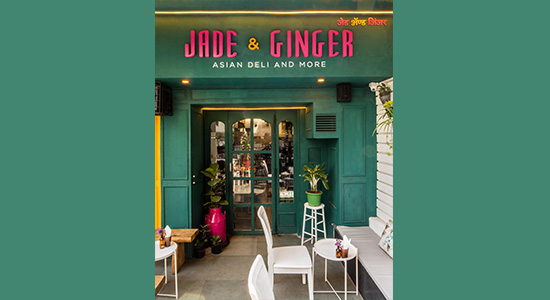
“The success of Bombay Taco Company gave us the courage to let our rebel streak run wild. Asian food is becoming almost an obsession in Mumbai. However, we noticed that there was a major void in the middle market. At one end of the spectrum, we see fancy Japanese restaurants opening up across the city, and at the other end we immediately associate momos with spicy street food that leaves us wanting more., - launched a deli that would fill the gap; evoke interesting Asian flavours and rest easy on the pocket. The essence of the place is this balance, not just in terms of flavour,” shared Kishore DF, Founder of Jade & Ginger.

Chef Parth Purandare has curated the menu offering a variety of salads, sandwiches, sliders, baos, tacos and smoothies. Salads include the Nippon Classic Salad, Asian Avocado Cobb, Katsu Chicken Salad, and Vietnamese Buff Salad to name a few.
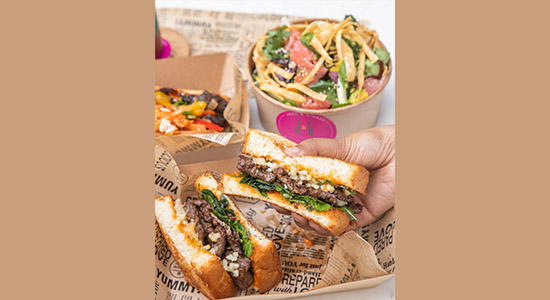
Jade & Ginger also offers refreshing smoothies like Gold Coast, a tropical favourite made with pineapple, banana and coconut juice; Green Goblin a drink that looks like the Hulk, made with avocado, mint and honey; Refuel, as the name suggests is an energising smoothie made with berries, yogurt and banana; and Roots is a fun smoothie made with chia seeds, pomegranate, green apple and beetroot.
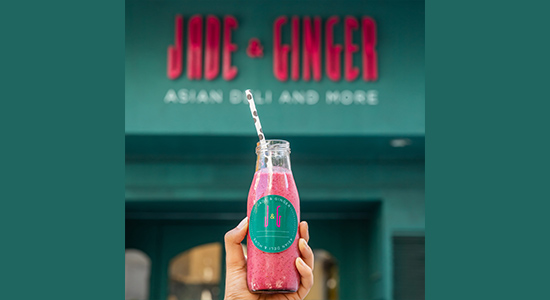
“We are excited to launch Jade & Ginger! It is comfort food for everyone; no matter your likes and dislikes or dietary restrictions, you will find something delicious on our menu. All our food is made in-house; we ensure that we get great ingredients and everything is fresh. We’ve made it a point to have salads, sandwiches, and smoothies that are delivery-friendly. We were keen to offer a choice of foods that bring together the best of flavour profiles and dishes; not always associated with Asian cuisines. We wanted this place to fit the profile of Bandra and be nimble enough to take to other exciting neighbourhoods in Bombay and beyond,” added Purandare.

Azure Hospitality has launched its Pan Asian restaurant Mamagoto to the shores of Goa.
Founded in 2010 by entrepreneurs Kabir Suri and Rahul Khanna, Azure and its talented team continue to maintain their reputation of creating fun food and beverage concepts at extraordinary value by expanding their footprint.

“Our vision has always been to take our brands into local communities and neighborhoods, give them quality, a fun, and young experience and put smiles on our customers. Goa has been particularly dear to us given its unique history, epic beauty, people, and traditions, and we are humble, excited to be able to serve it with our trademark azure style of hospitality,” shared the co-founders.

Chef Ravi Saxena has curated the menu with utmost care for local ingredients and culinary traditions.
This remarkable 60 seater property of Mamagoto has been designed as an old home with vintage, classic features, and the brand’s iconic manga-inspired design.

With an intricate and extensive Sushi and Dimsum Menu, along with the signature bowls, and other wok-tossed curries and stir-fries, Mamagoto has got all bases covered. The restaurant is also serving mixology-inspired cocktails and a wine list.

Brand chef, Siddhart for Mamagoto is executing the everyday operations and overlooking the up and running of the restaurant.

Wok Tok is a pan-Asian speciality restaurant that blends in the best of Vietnamese, Thai, Japanese and Chinese culinary excellence. The restaurant is located at The Grand New Delhi where Executive Chef Anuj Kapoor has been preparing the most intricate and significant time-consuming broths. These broths take anywhere between 6 to 12 hours to be ready. Bursting with flavours, they are then married with the choicest speciality ingredients flown in from Japan, Singapore and Thailand.
“Ramen is arguably one of the most intricate preparations, with substantial time-consuming broths that are both intense and delicate at the same time.”
~Executive Chef Anuj Kapoor
In a candid conversation with Restaurant India, Executive Chef of The Grand New Delhi, Anuj Kapoor speaks about the importance of maintaining the authentic flavours, especially at pan-Asian restaurants, while serving soups to the diners.
Serving Ramen Noodles at Wok Tok
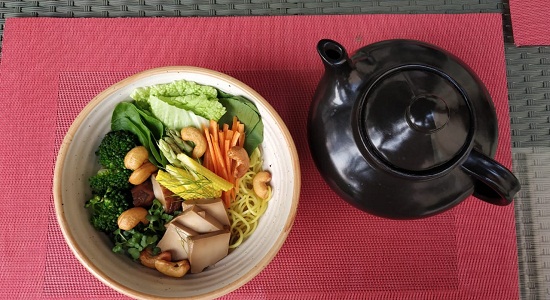
Spicy Tofu Ramen
Ramen is an authentic Japanese preparation and it’s quite a wave now, worldwide. It’s much popular among people in Japan and the US, and now is entering the European market as well. People are going gaga over ramen. Most of the versions of ramen that I had tasted in India are the shoddy versions of thupka. The broth is the building block of the ramen. The beauty of real ramen lies in the potency and intricacy of its broth or the stalk, which has to be treated with an utmost sanctity. I am right now doing six varieties of ramens at Wok Tok, the Pan-Asian restaurant at The Grand New Delhi. Each one has a separate, dedicated broth. For example, the sea food’s ramen has a broth made of lots of shellfish, crabs, prawn heads and shells, and lobster head in the water. It takes two hours, beyond that if you boil, the broth turns bitter.
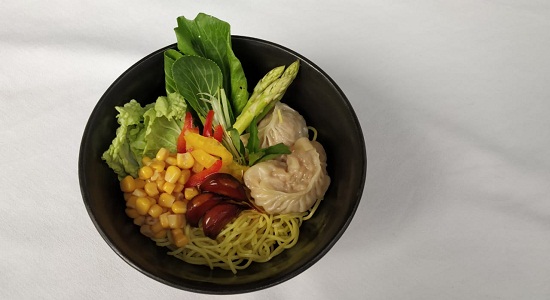
Gyoza Ramen
A sweet direction is given to the seafood ramen. I had added celery, carrots and fennel bulbs. It’s not sweet in taste, but in flavours. Six-eight hours are required to create the broths. They are very intricate. When I talk about the chicken ramen, in every sip of the broth you will taste the meat. Shitake Mushrooms Gyoza or the dim-sums have the chicken fillings inside; there is a veg version of Gyoza too. Tofu version of ramen is also there; the filling is chicken mince. I have added a twist in Pad Thai by infusing Thai flavours; even the noodle changes. The noodle here is flat rice noodle, and the broth has Thai herbs. It has Kafir lime and lemongrass. I have used intense flavours. I had used straw mushroom which is rare.
Must Read: Four On-Trend Soups at Restaurants in India
Cooking With Artisanal Soya Sauce
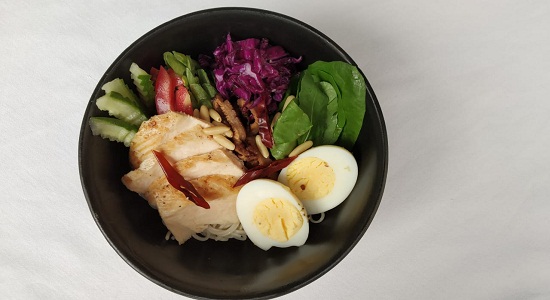
Chicken Ramen
I have used artisanal soya sauce which is still being made in a few parts of Japan. There, the sauce is made in a very manual and a home-style manner wherein they have these huge wooden screens, a big pit in the house where soya bean is fermented; the sauce is made with fermented toasted soya beans. The slurry from the pit is taken out after weeks or months, and even years, and then placed on the wooden trays or screens where they are pressed manually to get the extract. As compared to the industrial preparations of the sauce, the artisanal soya gives a much better rounded-off flavour rather than sharp, salty.
Ramen Trends: India is Now Opening up to International Influences
Ramen trends have only begun to catch up. Only very few people have introduced the ramen so far. But India has been the land of Tibetan food of thupkas. Traditionally, India is not a soup country. We don’t really have more soups that we could speak of. Mulligatawny is supposedly a soup from Andhra and is internationally acclaimed. But that’s the only soup you can think of. Others are tamatar dhaniya ka shorba, dal ka shorba. We, Indians, do not eat course wise, traditionally. In the past two generations, people have opened up to international influences. It is still a long way for other cuisines to happen in India at a mass scale. But Chinese (Sino-Ludhianvi, Chinjabi), Italian, Thai and then others are happening slowly. Tibetan has been long enough here for people to love their dim sums, noodles, and soup on a mass scale. Thupka and ramen are examples of noodle soup. I think it’s only an evolution of the model soup phenomenon.
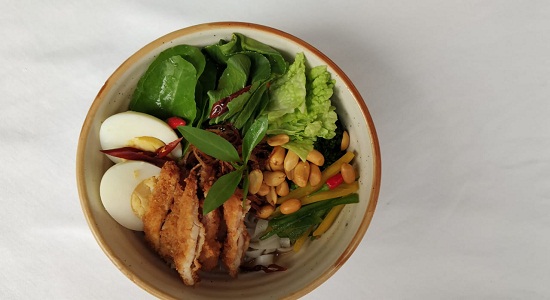
Pad Thai Ramen
Fresh and Locally-sourced Produce Will Take the Lead in 2019
There will be more focus on organic, fresh and locally-sourced produce. I see a reduction in the processed veggies at least in the high-end circuits. The processed foods start from the uppermost edge of the spectrum and then filter down to upper-middle, middle and then lower-middle class. Right now, the processed foods in terms of fresh veggies, the perishables, have had their stay with the top echelon of the society. It will filter now to upper and lower-middle class where it will find huge volumes. But the upper echelons, due to the health reasons, will see a decline in using the processed veggies and will move towards the fresh produce.
The processed veggies industry will see much more massive consumption among the middle class. Processed food is something very different and is not going out of fashion any time soon.

After working with some of the top restaurants in Dubai, Thailand and other parts of the world, Gurmehar Sethi came back to India opening his Thai restaurant ‘Ziu’ in Delhi. Being a chef Gurmehar had an eye for detail when it comes to ingredients. Witnessing that there was not a good Thai restaurant in Delhi and the one available were inside a five star hotel in the form a pan Asian menu which used to serve red or green curry in the name of Thai food. Here are excerpts from the interview:
The idea
The whole idea of starting this restaurant was to take all street food from Thailand and the whole menu would be complete Thai. We brought food from Thailand and gave it an innovative touch. And, as people are turning health freak they want to eat health food so we do a lot of health food including brown rice cracker which we do air fry instead of deep frying in the restaurant. So, a lot of the different kind of cooking method, ingredients which we are flying down from Thailand, the chef garden where I grew my own ingredients is smallest thing that we have included in this restaurant. Ziu in itself means cultivation. So, that’s where I get the name, the menu and the design giving the restaurant an innovative, modern kind of design. We have an open kitchen at the restaurant, the interaction with chef, pairing of food; drink and wine all have been taken into consideration when opening this brand.
Why a Thai restaurant
Pan Asian is very over rated and every restaurant you go to is tagged as a pan Asian restaurant. Even if you go to a food fest you see most of the restaurants serving Pan Asian food and we are very innovative as we are doing very different menu and are different from any pan Asian or Thai restaurant. We do not do a raw papaya salad instead we do an air fryer or the crispy version of papaya salad. The whole papaya is crispy and we sauce it in chilli, lime and peanut. At the end of the day you have to work with the taste of Indian Palate but the taste has to be authentic.
Keeping vegan in mind
People in India like spices and Thai food is spicy. As there is lots of vegetarian client in India what we do is we avoid using fish sauce, shrimp sauce and we make our own curry paste and sauces. We make pure veg for people who are vegetarian because it is important. Today anything can happen to a person because he is allergic to any ingredients so there is no ajinomoto and any MSG in our food.
Catering on numbers
The response has been good. We have actually managed to get repeat guest which I am very happy of. 80 per cent of our guests are repetitive because they love our food. We have 100-120 people coming in a day with an average ticket size of anyway between Rs 1200-1500. In today’s time you have to see the pricing and I being a chef have to spot on the food. Since it is a price sensitive market you do not want to go to a five star restaurant and get a standalone restaurant. So, the pricing matter a lot.
Playing with flavours
Our restaurant is a luxury dining place. When somebody enters in he may think that this is very expensive restaurant but what we do is when the guest live they are surprise by the food, the kind of experience, presentation. Our aim is to provide quality to the people in affordable price where people can afford to come. It is for people who have good knowledge of food and the understanding of the ingredients we are doing, they will understand our food.
Design is the key
If you see the wall it has very raw stone, all the graphics are very thai looking (fish, the snake skin) also the roof is modern kind of roof which is wooden kind of thing in old days in Thailand. I have taken old Thai look giving it a modern touch.
Expansion plans
We will be doing restaurants expanding to Bengaluru and Hyderabad and Delhi. We will open two more by this year. We will look at Dubai as well by next year.

When was the idea to start Kylin Skybar initiated?
2010 was when we decided to start Kylin Skybar, as we had realized that Delhi needed a Skybar to be part of its nightlife. The Kylin Skybar is one of the first-of-its-kind nightlife destinations. The ambience of Sky Bar changes at least three times a year to adjust to the weather.
Why a Pan Asian restaurant?
When the idea of Kylin came to us, a truly Pan-Asian concept was missing in the New Delhi market. There were a lot of Thai & Chinese restaurants but not a genuine Pan Asian offering. So we decided to introduce one. It was an endeavor to tailor people’s tastes and make them experiment with Pan-Asian flavors.
What was the total investment you put in to come up with this restaurant?
Kylin Premier has seen a total investment of INR 2 crores.
How have you designed the outlets when compared to the food theme?
The designing of the outlets was done keeping in mind the fact that we wanted to provide a combination of modern design and a comfortable vibe to our patrons. The décor is Oriental and yet we have paid special attention to the lighting.
How is the menu designing done?
The menu is one of the most important focus areas for us. The aim is offer a balance between Asian flavors. We offer delicacies from all across the South Eastern Asia, from Thailand to Japan we have offerings across categories.
What is that one factor which makes your food differ from others in the same segment?
No two points about it, our Teppanyaki grill is what makes our food stand out.
What is the average foot fall at your restaurants?
The Kylin repertoire witnesses an average foot fall of 200 people per day.
How do you market your brand?
We pay special attention to social media in order to leverage our brand across categories. Whether it’s upping the Kylin experience or running competitions, either in association with Facebook groups or on Instagram or on our social media pages. Social media is definitely one of our focus areas in marketing. Detailing is important, even the images that are put up are done so after careful consideration.
Apart from social media, we also market our brand through experiential events such as the famous Kylin Skybar Goddess Nights where we have goddesses and brands playing host every Thursday night at the Skybar.
What is your expansion plan?
We aim to scale up to 20 outlets by March 2017. The cities we’ll be expanding to are - Lucknow, Chandigarh, Delhi and Mumbai.
Copyright © 2009 - 2025 Restaurant India.





